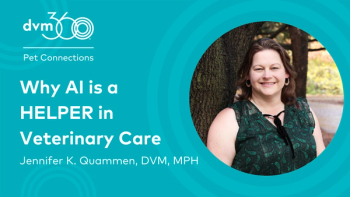
Who pays for time?
As veterinarians, we often find ourselves unable to determine the nature and cause of the problem case. So, who pays for our time?
Veterinarians often are expected to make a diagnosis when working on dairy farms. The patient might be a cow with clinical disease or a group of underperforming animals. The diagnosis is a snap in some cases. But as veterinarians, we often find ourselves unable to determine the nature and cause of the problem case.
With individual cows, we are limited by economic constraints tied to running exhaustive ancillary tests. In most cases, we recommend some type of action based on what we can determine while standing at the side of the cow. If our plan succeeds, the cow returns to profitable production. If not, it leaves the herd. Either way, life moves on.
With herd problems, the outcome is less clear. Problems of poor performance can drag on indefinitely, robbing the owner of profit and satisfaction. The problems are there each time we visit the farm. If they are not solved eventually, a frustrated owner might make changes that include seeking another veterinarian, nutritionist or herd-management advisor. I have been fired from all three roles when results were not satisfactory.
It takes time
As I reflect on 35 years of trying to make a diagnosis on site, I conclude that it takes a large time investment to uncover the cause of poor herd performance. And time is expensive. Often, neither the owner nor we are willing to invest adequate time to do all that's necessary, so we cut corners and hope for the best. We might not do this consciously, but if we look back, that is the decision.
I divide the time required to make a thorough diagnosis between communication and observation. Communication requires talking to those who play a role in a farm's daily activities. The owner or manager comes to mind, but too often discussions stop there. The owner or manager might think he or she knows what happens, but in reality that's often not the case. In some instances, that person might be reluctant to share relevant information.
We need to go beyond management to the support team, which includes the nutritionist, other veterinarians and the people who actually do the work. We must learn to ask open-ended questions, and foster the art of getting people to open up and share their ideas and concerns. When it comes to communication, most of us need to sharpen our listening skills.
Case in point
I recently spent a few hours on a farm with reproduction problems. A review of its Dairy Herd Information Association (DHIA) records indicated that conception rates dropped significantly 18 months earlier. The owner reported nothing changed to explain the decline. Later that day, I called the herd veterinarian, and he asked if I knew that the owner started breeding the cows, replacing the person who previously performed the task.
If we want to know how many times a day feed gets pushed up, we can ask the owner; he will tell us what he thinks happens. But we need to talk to the person responsible for pushing up feed. We can ask, "Do you push up feed several times a day?" It requires a one-word answer. Or we can say, "Tell me about what you do each day." Open-ended questions require more effort, but the answers are far more revealing.
Observation
The other time-consuming activity is observation. The best way to find out what happens to the cows is to pretend you are one. Hang out with the herd for a day. Be there a few minutes before the first farm worker shows up, and hang around until the last one leaves. This probably requires two visits, unless you have more stamina than me. Watch the feed mixing and delivery process. Spend time quietly observing the milking routine. Check out what is being done to get cows bred. How clean and comfortable are the stalls? What are the conditions for dry cows and springers?
When we are unable to make a diagnosis, we probably do not know all the facts. Getting information takes time, and because time is expensive, we tend to compromise and end up with wrong or lacking information.
How do we get paid?
So if we need more time, who pays for it? The answer comes from another question: Who benefits? In most cases, the farm owner will be the beneficiary of improved herd performance and should pay for the time invested. Some owners will balk; you easily can generate a $3,000 bill for your time. To overcome such resistance, calculate what the problem costs production. Offer to split the economic benefit for the first year post investigation. Going through this exercise might bring the owner to pay your hourly fee, but if he prefers to go the other route, take him up on it.
Dr. Gardner is the business development manager for Cargill Animal Health in eastern Pennsylvania. He also consults with dairy practitioners regarding practice management.
Newsletter
From exam room tips to practice management insights, get trusted veterinary news delivered straight to your inbox—subscribe to dvm360.






